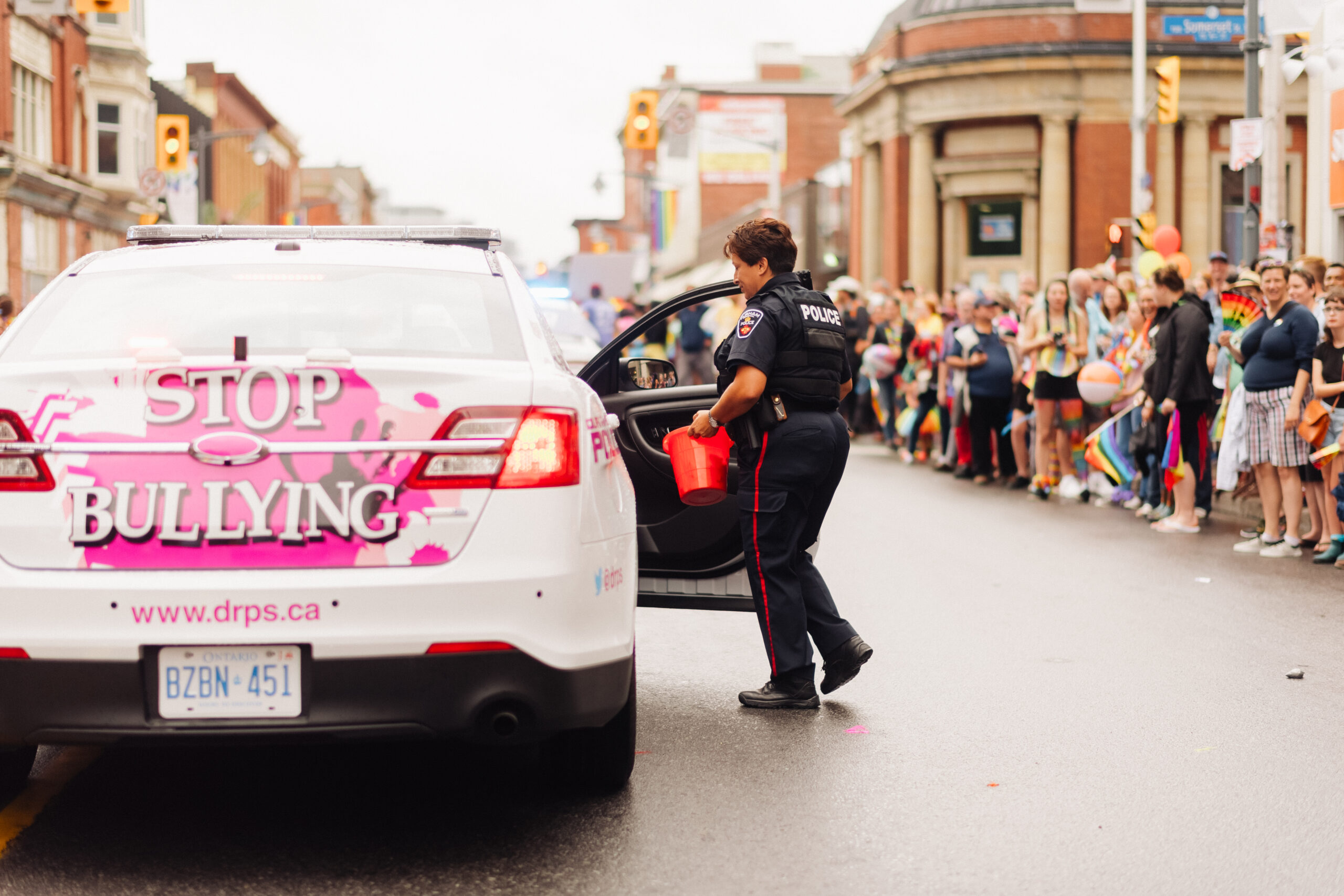After announcing on July 5, 2017, that he would march in uniform in Ottawa’s Pride parade, Ottawa’s chief of police seems to have had a change of heart.
Charles Bordeleau’s original announcement followed Capital Pride’s request to police to leave their uniforms at home if they wished to walk in the parade, though organizers ultimately left the decision up to individual officers.
At the time, Bordeleau said he would come in full uniform. “We are proud of our uniform, and it is part of our identity — it’s who we are and how we serve the community,” he told the Ottawa Citizen.
But Bordeleau has now reversed his position. “Since that time, we have had further discussion with LGBTQ2 police members, from a number of community partners and Liaison Committee members,” he says in a statement issued Aug 14, 2017.
Bordeleau says he was out of step with members of the force who decided to leave their uniforms at home.
“The LGBTQ2 members that I met with expressed hurt and frustration about the request to exclude uniforms for off duty officers at Pride this year. The majority also felt that attending Pride in uniform would not help us build trust,” he says.
Bordeleau says he supports his officers’ individual decisions not to march in uniform, and is “proud of them for carefully considering how best to proceed in order to move forward together.”
The issue of police uniforms in Pride parades has divided LGBT communities nationwide, he says, and moving forward will require “real conversations with each other at the local level.”
Bordeleau adds that ditching the uniform at Pride can be viewed as parallel to other police bridge-building strategies, like when they appear in plainclothes to greet new immigrants, refugees and attend some youth programs.
“We need to continue building on the many years of great work with the LGBTQ2 communities that community partners have helped us to achieve. In particular, we need to listen to the concerns of fear and mistrust and have conversations with trans, indigenous and racialized youth and young adults, and the organizations who provide their services,” he says.
Bordeleau now says he will march alongside officers and civilian staff in a police-branded golf shirt in this year’s parade, scheduled for Aug 27, 2017.
‘History is not being diminished, it’s being added to’
Capital Pride’s chair welcomes the police chief’s new stance.
“We see this as a positive step forward in an effort to build on the existing relationship between local law enforcement and all LGBTQ2 residents within the national capital region,” Tammy Dopson tells Xtra.
The decision to ask police to march out of uniform came from looking at both international events and the city’s own specific race relations and policing climate, Dopson told Xtra by phone in July.
Initially, she says, she noticed racialized and minority community groups weren’t interested in working with Capital Pride and felt they did not see themselves reflected in it. Dopson says she began asking herself and the rest of the Pride board how to reach out and include such groups.
“Then Orlando happened,” Dopson says. “The majority of the victims were racialized. That struck everyone.”
A few weeks later, on July 24, 2016, an Ottawa police officer was involved in the death of Somali-Canadian Abdirahman Abdi, resulting in a manslaughter charge and suspension of the officer involved. Dopson says this added to the tensions growing between Ottawa citizens and police (although Abdi was not known to identify as queer).
Just because white LGBT people have mostly won their rights, Dopson says, doesn’t mean the community can move on.
“There’s a lot of fear and resistance to that change from the most privileged in our community,” she says. “I think you know who we are talking about; there’s one glaring demographic in our social media who keep on commenting. I have to believe inherently Canadians are good and if they really understood, they would go with us. But unfortunately there’s a lot of fear.”
“A lot of Prides have lost sight of that,” she says. “When BLM [Black Lives Matter Toronto] demonstrated last year I thought it was brilliantly strategic in many ways,” Dopson adds. “There was a message — from the universe, the cosmos, from wherever — but clearly there was a message being sent that we have to check our privilege.”
Capital Pride held community consultations in person and online to help formulate their request for police over the past year, Dopson says.
“There was a very strong consensus that a significant part of the marginalized community and their allies. . . felt the police uniform was not a welcoming sight for them, there was discomfort because of their lived experience,” Dopson says. “There was also clearly empathy for the LGBTQ officers who were there and making inroads in this institution which, when it comes to violence against racialized bodies, is greatly troubled.”
Dopson says positive aspects of progress made between the queer community and police are not diminished by asking that the use-of-force kit be left out of the Pride parade.
“History is not being diminished, it’s being added to,” she says. “It’s been in one spot for a long time. If you look at it from a human-rights context, we probably will never be stopping until we have full equity across the board, and that’s the purpose of Pride.”
If we ever achieve that equity, then we can just celebrate, she says. “Until then, we can’t just celebrate.”

 Why you can trust Xtra
Why you can trust Xtra


